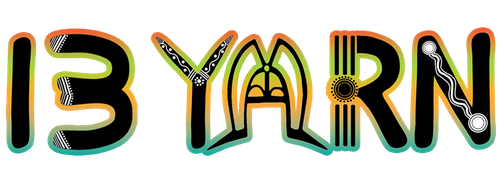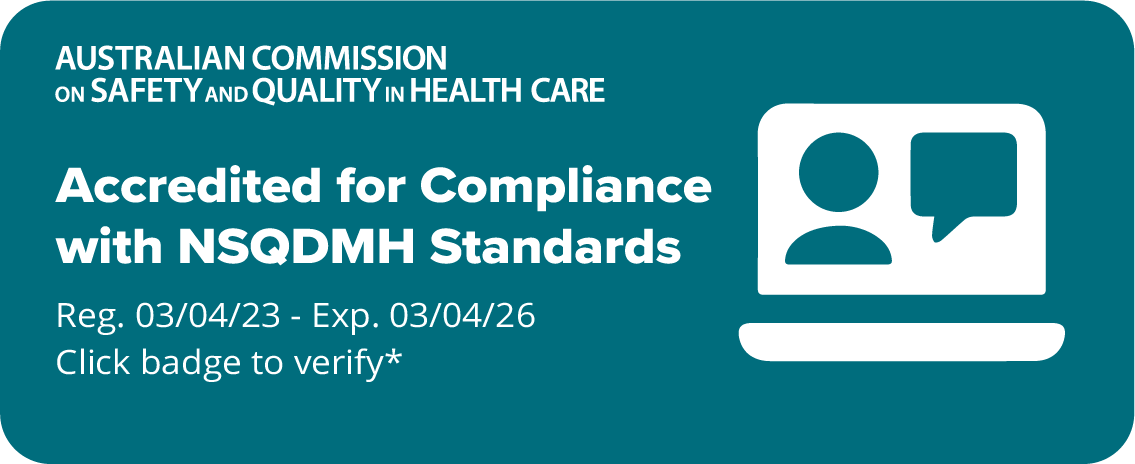Our stories
- Mark Discussion as New
- Mark Discussion as Read
- Float this Discussion for Current User
- Favourite
- Subscribe
- Printer Friendly Page
- Mark as New
- Favourite
- Subscribe
- Get link
- Flag for Moderator
06-05-2016 03:27 PM
06-05-2016 03:27 PM
A Paper I wrote on Social Phobia and anxiety that I never submitted
Hi @NikNik,
This is a paper, on social phobia and anxiety, that I wrote a few years ago was never submitted because I left my university studies before I could submit it. I was enrolled in a clinical psychology degree. I thought that some people may be interested to read it, especially since there is a talk given by Sarah Wilson on anxiety. This paper could be a very brief and basic introduction to the issues around social phobia and anxiety.
Social Phobia: Definition, Symptoms and Cognitive-Behavioural Methods.
Social phobia is one of seven major anxiety disorders classified in the Diagnostic and Statistical Manual of Mental Disorders (4th ed., text revision, American Psychiatric Association, 2000) as fear of social situations, where the person believes that s/he is exposed to the criticism and scrutiny of strangers. Its prevalence rate is between 10 and 16 per cent of the population (Andrew, Creamer, Crino, Hunt, Lampe & Page, 2003; DSM- IV-TR) and statistics of co-morbidity with depression are quite high compared to other anxiety disorders (Douglass, 2001; Heimberg, Stein, Hiripi & Kessler, 1999). Nevertheless, social phobia is largely undiagnosed, meaning that the true number of sufferers is unknown (Furmark, 2000). This discussion will describe a variety of symptoms associated with this severe disorder, which, according to Furmark, can gravely affect a person’s life and isolate them from society. It will describe the ways in which learning and cognitive theories explain how symptoms of social phobia occur and how cognitive and behavioural theorists have provided the foundations for the development of cognitive behavioural therapy (CBT). It will then move to describe how CBT, which is a first choice evidence-based psychotherapy, supported by numerous research trials, works and how it is used to reduce symptoms. Finally, it will discuss limitations because humans are far too complex to be reduced to one-size-fits-all interventions (Cooper, 2008) and because, while CBT insists on the scientist-practitioner model, good therapy is situated somewhere between art and science, not science alone (Holmes, 1993).
Behavioural and somatic symptoms vary in severity from extreme, such as panic attacks, to mild. General symptoms are: feelings of being restless, lack of concentration, feeling irritable, difficulties sleeping and tension and fatigue (DSM- IV-TR). Panic attacks comprise more intense symptoms. These rise from fear and related bodily functions that, while in some circumstances are quite normal (true alarms) and prepare the individual for danger (Canon, 1915), such as when being chased by a dog or confronted by an armed criminal, are abnormal in social phobia (false alarms) (Page, Menzies, Bryant & Abbott, 2011). Release of adrenaline, or epinephrine, in the blood, gives rise to bodily responses to fear such as increased blood pressure and heart rate, dilated pupils, tension of the muscles, decreased digestion, closure or relaxation of the bowel and bladder and increased sweating, which are known as the freeze, flight or fight responses (Page et al., 2011): “Freeze” is the feeling of complete helplessness when all adaptive reaction stops; “flight” is the act of escaping to avoid danger; and “fight” is confronting unavoidable danger (Page, et al.). There is reason to believe that females can have a different response to fear known as “tend and befriend,” a behaviour that protects the self and others through nurturing and promotes the maintenance of existing, or the establishment of new, relationships (Taylor, Woody, Koch, McLean, Paterson & Anderson, 1997). Both behavioural and somatic symptoms are linked to cognition specifically distorted thoughts and false beliefs.
According to Clark (1999), social phobia arises from distorted thoughts and beliefs about social situations such as fear of other people’s judgments and criticism. The main fear of this anxiety disorder is that the sufferer will exhibit their symptoms and behaviour and consequently lose face in public (Clark, 2001). While the sufferer’s obsessive desire is to find approval, acceptance and respect from other people, because of past experiences with social anxiety and other negative events, social phobics will create certain assumptions about their social situations that will lead them to believe that they are in danger of being ridiculed, criticised and disliked in such a way that severe and debilitating symptoms will arise, which will further fuel the anxiety (Clark & Wells, 1995; Freeman, Pretzer, Fleming & Simon, 1991). In particular, sufferers are terrified at the thought that people will notice their symptoms. Because of this, they may try to hide their anxiety and related symptoms which may make their behaviour, mannerisms, communication and body movements appear strange to others. This may attract negative feedback which, in turn, supports the negative beliefs of sufferers (Clark, 2001). Another cognitive symptom, which leads to avoidant behaviour, is to think of ways to avoid situations that are perceived as dangerous social interactions, especially those based on past negative experiences. Avoidance of social situation leads to missed opportunities with related costs (Page, et al., 2011). These intrusive thoughts are cognitive symptoms that give rise to anxiety, which in turn leads to more intrusive thoughts. Clark and Wells (1995) name the cognitive processes of a social phobia “the anxiety program,” a negative cognitive program that can persist for years, unless the sufferer receives suitable treatment. Today social phobia is seen as a Biopsychosocial problem: that is biological, psychological and environmental/social causes (Barlow, 2002). Knowledge of and identification of symptoms is important in the description of social phobia and diagnosis, while Learning and Cognitive theory are two major theories that shed some light on how social phobia develops.
Learning Theory attempts to study the aetiology and perseverance of social phobia using classical conditioning, vicarious conditioning and operant conditioning (Watt & DiFrencescantonioa, 2010). For this theory, social phobia rises from learned experiences in the environment and the primary focus is on learning and behaviour. Classical conditioning originated from the work of Pavlov and his dog experiments, but is often associated with the 1920 Little Albert experiments of Watson. This is a process of “paired association” where an individual is trained to respond to an unconditional stimulus, which in the Albert experiment was a loud noise, paired with a conditional stimulus or the white rat (Burton, Western and Kowalski, 2012). In the case of social phobia, if an individual experiences heart palpitations and dizziness (arousal-related sensations) at the same time as a panic attack out of the blue, then the person may learn to fear heart palpitations and dizziness to the point that such sensations may trigger further panic attacks (Watt & DiFrencescantonioa, 2010). Operant conditioning, also known as instrumental learning, is mostly associated with the work of E. Thorndike and later B. F. Skinner. Skinner devised a method whereby reinforcement (either negative or positive) and punishment (either negative or positive) played the roles of strengthening (reinforcement) and weakening (punishment) certain behaviour. For example, if a child was to complain of anxiety about going to school and the parents rewarded him by letting him skip school (positive reinforcement), this would tend to increase the behaviour or tendency to feel anxious (Burton et al., 2012). Vicarious conditioning refers to learning by watching and imitating other people’s behaviour, a theory that is supported by research (Burton, et al., 2012; Page, et al., 2011). For Bandura, cognitive processes are very important for the learning process. While known as a learning theorist, he thought of himself as a social cognitive theorist, therefore providing a bridge between learning and cognitive theories (Burton, et al., 2012). For example, while a client may be aware of their irrational thoughts related to social phobia, they may be unable to help themselves because their neural pathways were created not only through cognition, but also through learning. Pavlov’s idea that classical conditioning changes the activity of neurons that create the connection between action and response is supported by research (Bailey & Kandel, 1995). Because neural pathways and the brain can change, noted by Doidge (2010), people need to unlearn the unwanted behaviour. Behavioural and cognitive modification programs are very useful in providing the right tools that clients can use to modify their behaviour (Martin and Pear, 20XX). Ellis proposed that while thoughts have an impact on emotions, behaviour can in turn give rise to thoughts and emotions. For Ellis, it is interactional (Neenen & Dryden, 2011). For Hofman (2008) cognition is critical to even the most basic forms of learning and cognitive and learning theories work well together.
Cognitive theory has emerged out of the work of D. Meichenbaum, A. Ellis and A.T. Beck (Corey, 2011). Beck’s cognitive therapy had been inspired by Ellis’ rational-emotive therapy. While the methods of these therapists differed in their application, they shared a main philosophy. At the heart of abnormal psychology, such as social phobia, there is dysfunctional thinking (Beck, 2011; Grieger & Boyd, 1980 ). For CT, the main problem is to be found in the way a client “perceives” a given situation, not the situation itself. It is based on a model that takes into consideration the relationship of cognition, behaviour and emotions (Freeman et al., 1990). CT focuses in particular on three aspects of cognition: “cognitive distortions,” “automatic thoughts” and “underlying assumptions.” The A-B-C method, used by Ellis, best explains cognitive theory’s approach. “A” symbolizes the activating event; “B” the beliefs; and “C” the consequences or manifested behaviour. From the CT perspective it is not A (the event) that causes C (the consequences), but “B” or the interpretation of the social phobic. More precisely, it is the irrational beliefs that are at the heart of the problem (Corey, 2011). These beliefs can give rise to “automatic thoughts.” Learning theory, RBT and CT have led to the development of cognitive behavioural therapy.
Cognitive behavioural therapy (CBT), loosely defined, is a family of techniques that can be very powerful in inducing permanent change. It is based on the scientist-practitioner model where the therapist is constantly informed and guided by the scientific method to ensure adequate operalisation of the problems and measurement and testing of cognitive and behavioural changes toward the attainment of specific goals. In this sense, it is much more structured and goal directed than other methods (Burton, 2012; Beck, 2011). CBT aims to teach sufferers how to control responses to stimuli that elicit fearful reactions giving rise to social phobia. By changing intrusive thoughts that generate anxiety, the unwanted behaviour can be modified, therefore eliminating the anxiety’s automatic responses. However, simply telling the clients to change their thoughts is not enough. Clients need to learn new skills, be dedicated to change and practice repeatedly the methods that will lead them to change their thinking (Neenen & Dryden, 2011). In addition, studies suggest that CBT works well for social phobia with co-morbidity (Stein and Stein, 2008). Both group and individual therapy are effective, with group therapy being considered the most effective (Heimberg, 1998). Individual therapy is often preferred by clients because of the fear of strangers and of social situations. Group therapy has its benefits in that it creates opportunities for “…positive and non-critical social interactions” (Coles, Heart, Richard & Heimberg, 2001). Two main techniques in particular are used to break the social phobic cycle: exposure therapy and cognitive restructuring.
The aim of exposure therapy is to desensitise the client to social situations which cause avoidance, fear and anxiety. There are two kinds of exposure: in vivo or real life physical exposure to the feared situation which, according to research, is the most effective treatment (Choy, Fyer & Lipsitz, 2007); and imaginal or mental exposure in preparation for the in vivo exposure (Page et al., 2011). Exposure to the most feared situation is known as flooding, but this method is less often used because most clients prefer to proceed gradually from the least fearful situation to the more feared ones, rather than be suddenly confronted with extremely fearful situations (Pull, 2005). Cognitive restructuring is an effective method used to help clients identify their irrational thoughts using a variety of strategies, including guided imaging, audio or video recordings of therapy sessions, and Socratic questioning (Page, et. al., 2011; Carey, 2004; Beck, 2011).
The main aim of Socratic questioning is to change the irrational thoughts. By asking strategic questions, the therapist creates therapeutic opportunities and helps the client develop strategies to cope with problems in the future by empowering them to become their own therapist (Carey, 2004). Four procedures of cognitive restructuring described by Hope, et al., (2010) can provide a framework for Socratic questioning and these are: 1) the identification of automatic thoughts and related negative views of the self and the world; 2) identification of distorted thinking of the automatic thoughts; 3) philosophical and rational evaluation and 4) restructuring of the irrational thoughts toward more positive outcomes. Socratic questioning aims to challenge the avoidance of social situations based on previous negative experiences and the tendency of the client to imagine or anticipate what others may be thinking (Beck, 2011).
Another method of CBT is to give the client homework. Homework aids toward constant monitoring of improvement through measurement of attitudes and moods and it gives an indication of the client’s commitment to the therapy, progress or setbacks (Beck, 2011).
In conclusion it can be stated that CBT is considered the most effective psychotherapy, especially if used in conjunction with pharmacotherapy with research supporting the combined effectiveness (Heimberg, Liebowits, Hope, Schneier, Holt ... Klein, 1998). Nevertheless, there are problems with anti-depressants, which are not indicated for children and teenagers and can have adverse side effects in long term usage (Whitfield, 2011). While social phobia can persist even when clients are constantly exposed to feared situations, Clark writes that “…dropping safety behaviour… shifting to externally focused attention… and using video feedback” often help to break the negative cycle (2001, p.427). However, CBT does not work for everyone (Cooper, 2008) and there are reasons to believe that when it derives from the combination of genetic vulnerabilities and childhood traumatic experiences due to inadequate parenting, especially if post-traumatic stress disorder is present, it can be difficult to treat. Indeed, one of the most recent aetiology is provided by Rapee and Heimberg (1997), who propose a model social phobic often begins life with overprotective or overly intrusive parents (Coles, Heart & Heimberg, 2001). Research indicates that other therapies are equally effective and that the idea that CBT is superior to other methods is a myth. For Cooper, seeing CBT as a one-size-fits-all therapy is detrimental in that clients who could benefit from other methods miss out. Cooper also argues that the relationship between therapist and client is very important in determining outcomes, in line with the client-centred approach and ideas of Carl Rogers (1957). In addition, success of the therapy is often based on the level of commitment of the client. People with a fixed mindset do not benefit from any therapy, while those with a flexible mindset tend to make progress (Dweck, 2006). Nevertheless the value of CBT and its behaviour modification techniques for the treatment of social phobia is well established. CBT is a set of tools, based on a theory of what causes problems. For example, childhood trauma doesn't directly cause harm. It changes the person's perception of self and environment. CBT works on such perceptions which is seen as the real problem. However, certain thinking is part of core beliefs which are extremely difficult, and sometimes impossible, to change (Beck, 2011). Finally, the environment is important so that, for example, it is hard to expect people to “…think healthfully …when working for an exploitative corporation?” (Tuggart, 2011). Humans are extremely complex and so is our life.
- Mark as New
- Favourite
- Subscribe
- Get link
- Flag for Moderator
06-05-2016 03:48 PM
06-05-2016 03:48 PM
Re: A Paper I wrote on Social Phobia and anxiety that I never submitted
Here are the references for this paper:
American Psychiatric Association. (2000). Diagnostic and statistical manual of mental disorders (4th ed., text rev.). Washington, DC: Author.
Andrews, G., Creamer, M., Crino, R., Hunt, C., Lampe, L., & Page, A. (2003). The treatment of anxiety disorders: Clinician guides and patient manuals (2nd ed.). New York, NY: Cambridge University Press.
Bailey, C.H., & Kendel, E. R. (1993). Structural changes accompany memory storage. Annual Review of Physiology. 55, 397-426.
Beck, S.J. (2011). Cognitive therapy: basic and beyond (2nd.ed).New York, NY: The Guilford Press.
Barlow, D. H. (2002). Anxiety and its disorders: the nature and treatment of anxiety and panic (2nd ed.). New York, NY: Guilford Press.
Beatty, M. J., Heisel. A. D., Hall, A. E., Levine, T.R., & La France, B, H. (2002). What can we learn from the study of twins about genetic and the environmental influences on interpersonal affiliations, aggressiveness and social anxiety?: a meta-analytic study. Communication Monograph, 69(1),1-18.
Burton, L., Western, D., & Kowlalski, R. (2012). Psychology - 3rd Australian and New Zealand Edition. (3rd ed.). Brisbane, Australia: John Wiley & Sons.
Cannon, W. B., (1915). Bodily changes in pain, hunger, fear and rage. (2nd ed.). New York: Appleton-Century-Crofts. Retrieved from
Carpenter, S. (2013). Neuropsychoanalysis - Building Bridges Between Psychoanalysis, Neuroscience, Psychology and Psychiatry [Electronic newsletter]. Retrieved from
Castonguay, G.L., Boswell, F.J., Constantino, J.M., Goldfried, R.M., & Hill, E.C. (2010). Training implications of harmful effects of psychological treatments. American Psychologist. 65, 34-49
Choy,Y., Fyer, A.J., & Lipsitz, J. D. (2007). Treatment of specific phobia in adults. Clinical Psychology Review, 27, 266-286.
Clark, D. M., & Wells, A. (1995) A cognitive model of social phobia. In R.G. Heimberg, M.R. Liebowitz, D.A. Hope; and F.R. Schneider (Eds.), Social Phobia (pp. 69 -93). New York, NY: The Guildford Press.
Clark, M. (1999). Anxiety disorder: why they persist and how to treat them. Behaviour research and tharpy 37, S5-S27. Retrieved from
Clark, M. (2001). A cognitive perspective on social phobia. In W.R. Crozier & L.E. Alden (Eds.), International handbook on asocial anxiety: concepts, research and interventions relating to the self and shyness (pp. 405-430). John Wiley and Sons. Retrieved from
Coles, M.E., Hart, T.A., & Humberg, R.G (2001). Cognitive behavioural group treatment for social phobia. In Crozier,W.R., and Alden, L.E. (Eds.), International handbook of social anxiety: concepts, research and interventions relating to self and shyness (pp.449-470). London, UK: John Wiley and Sons Ltd.
Cooper, M. (2008). Essential Research Findings in Counselling and Psychotherapy: The Facts are Friendly, London: Sage.
Corey, G. (2011) Theory and practice of counseling and psychotherapy, student manual. USA: Wadsworth Publishings Co. Inc.
Doidge, N. (2010). The brain that changes itself. (Rev. ed.). Victoria, Australia: Scribe Publications, Pty Ltd.
Douglas S. (2001). Comorbid major depression and social phobia. Primary Care Companion Journal of Clinical Psychiatry: Psychotherapy Casebook, 3(4), 179-180.
Dubi, K., Rapee, R. M., Emerton, J. L., & Schneiring, C.A. (2008) Maternal modelling and the acquisition of fear and avoidance in toddlers: influence of stimulus preparedness and child temperament. Journal of abnormal child psychology, 36, 499 – 512.
Dweck, C.S (2006) Mindset: the new psychology of success. Random House, New York.
Freeman, A., Pretzer, j., Fleming, B., & Simon, K. M. (1990). Clinical application of cognitive therapy. New York: Plenum Press.
Furmark, T. (2000). Social phobia: from epidemiology to brain function. [Doctoral dissertation, University of Upsala] Retrieved from
Grieger, R. & Boyd, J. (1980) Rational-emotive-therapy: a skills-based approach. New York: Van Nostrand Reinhold.
Heimberg, R. G., Liebowitz, M. R., Hope, D. A., Schneier, F. R., Holt, C. S., Welcowitz, L. A., Juster, H. R., Campeas, R., Bruch, M. A., Cloitre, M., Fallon, B., & Klein, D. F. (1998). (Cognitive behavioural group therapy vs p********* therapy for social phobia. Arch Gen Psychiatry, 55(12), 1133-1141. doi10.1001
Heimberg, R. G., Stein, M, B., Hiripi, E., & Kessler. R. C. (2000) Trends in the prevalence of social phobia in the United States: a synthetic cohort analysis of changes over four decades. Eur Psychiatry, 15, 29-37.
Holmes, J. (1993). Between art and science: essay in psychotherapy and psychiatry. New York, USA: Routledge.
Hope, D.A., Burns, J.A., Hyes, S.A., Herbert, J.D. & Warner, M.D. (2010). Automatic thoughts and cognitive restructuring in cognitive behavioral group therapy for social anxiety disorder. Cognitive Therapy Research, 34, 1-12.
Ipser, J.C., Carey P., Dhansay, Y., Fakier, N., Seedat, S., & Stein D.J. (2006). Pharmacotherapy augmentation strategies in treatment-resistant anxiety disorders. Cochrane Database Syst Rev. Oct 18(4):CD005473.
Martin, G & Pear, J. (20XX). Behaviour modification what it is and how it works. Pearson Educational International.
Neenan, M., & Dyden, W. (2011). Rational emotive behavioural therapy in a nutshell. (2nd ed.). London: Sage Publications.
Page, A. C., Menzies, R. G., Bryant, R. A., & Abbott, M. (2011). Anxiety disorders (pp. 45-90). In E. Rieger (Ed.), Abnormal psychology: Leading researcher perspectives. (2nd ed). Melbourne: McGraw-Hill.
Pull, C. B. (2005).Current status of virtual reality exposure therapy in anxiety disorder. Editorial review. Current Opinion in Psychiatry, 18, 7-14.
Rieger, E. (2011). Abnormal psychology: Leading researcher perspectives. (2nd ed.). Melbourne, Australia: McGraw-Hill.
Rogers, C. C. (1957).The necessary and sufficient conditions for therapeutic personality change. Journal of consulting psychology, 21(2), 95-103
Stein M. B., & Stein D. J. (2008). Social anxiety disorder. Lancet. 29, 1115-25.
Taylor, S., Woody, S., Koch, W.J., McLean, P., Paterson, R.J., & Anderson, K.W. (1997). Cognitive restructuring in the treatment of social phobia. Behavior Modification, 21, 487–511.
Taylor, S. E., Klein, L C., Lewis, B. P., Gruenewald, T. L., Gurung, R. A., & Updgegraph, J. A. (2000). Biobehavioural responses to stress in females: tend and befriend, not fight or flight. Psychological review, 107, 411- 429
Tuggart, A. (2011). A critique of CBT- part 1. Retrieved from
Walkup JT, Albano AM, Piacentini J, Birmaher B, Compton SN, Sherrill JT, et al. Cognitive behavioral therapy, or a combination in childhood anxiety. N Engl J Med. 2008 Oct 31.
Watt, M., C, & DiFrancescantonioa, S. (2010). Childhood Learning Experiences in the Development and Maintenance of Anxiety Disorders. Retrieved from:
Whitfield, C. L. (2010). Psychotic drugs as agents of trauma. The international journal of risk and safety in medicine, 22(4), 197-207.
- Mark as New
- Favourite
- Subscribe
- Get link
- Flag for Moderator
06-05-2016 04:23 PM
06-05-2016 04:23 PM
Re: A Paper I wrote on Social Phobia and anxiety that I never submitted
@theaveragejoe thank you for sharing your paper with us. It's good that you've been able to share it given that you did not end up submitting it for your uni studies. It was an interesting and well researched piece of work. I'm sure it will be a helpful resource to members on here, to learn about sympoms and treatment options for social anxiety. Was this a particular area of interest to you while at uni?
- Mark as New
- Favourite
- Subscribe
- Get link
- Flag for Moderator
06-05-2016 06:12 PM - edited 06-05-2016 06:17 PM
06-05-2016 06:12 PM - edited 06-05-2016 06:17 PM
Re: A Paper I wrote on Social Phobia and anxiety that I never submitted
Thank you for your kind reply, Mosaic. Yes it was an area of interest, students were given the choice of a few topics and I picked up Social Phobia which is one of the major problems associated with anxiety.
I really enjoyed my studies and felt very sad when I decided to drop out. My particular university was extremely biased towards scientific methods and I, being a sufferer with a lived experience, had notice a number of very disturbing facts: all research was based on scientific methods with most, or probably all, non scientific research being rejected.
I begun to do some personal research, and I spole with many academics, including professors and people high up in the university system. They were not happy either.
What I discovered is that pharmaceutical corporations have great influence in universities and this should not be so by any means. But, as you probably know, universities have become businesses where knowledge is controlled to the maximum, with little room for truly independent thought. And universities have very little funds so that corporations that offer money are naturally very welcome to do what they want, to a certain extent of course. But they do have tremendous influence in some (hoping not all) universities. Some may say that it is paranoia or conspiracy theory but not when so many academics and professors agree with this. agree with me 🙂
Unfortunately, universities also follow a well established ideology, the academic ideology, where everything is controlled.
In many respects, Universities are culturally-closed communities in which the inmates are required to march to the beat of the same monotonous drum, and to act out their professional lives, as opposed to their personal lives, in accordance with the same collective script or story that is handed down from on high. FOr many academics this is a metaphorical pit of despair. I have been found guilty of not conforming to the collective script, for complaining about this. Something had to give. So I left. But it was extemely painful because I would have made a good psychologist, I had all distinctions and high distinctions and this is even considering I am a migrant and English is my seconde language. I was helping many students there volunteering for up to 10 hours per week to help the students.
You have to have a very high IQ to enter into clinical psychology courses, and many students find it very hard going. My IQ is not that high but I am a hard worker and I learn fast not to mention that I had been at Uni before with an Honours Degree in Sociology.
Particularly young poeple often end up committing plagiarism and/or show other undesirable behaviour. So I was helping them. Only a few made it through and the level of difficulty was increasing steadily. I had to complain about this as well, because some academics where introducing philosophical topics of third year in first year courses. I knew because of previous studies.
But you see, most academics are not teachers. They will tell you that they are researchers and scientists. "I am not a teacher! I am a scientist!" An academic told me. To which I replied: "What are you doing here then? We need teachers first, people that can teach effectively first." They did not like my honesty. Yet universities should be all about honesty and transparencies to be real universities.Unfortunately academics specialise in research and follow the scientific method and are not always trained as teachers. Go figure!
Thank you for listening, this is good I feel better now.
- Mark as New
- Favourite
- Subscribe
- Get link
- Flag for Moderator
06-05-2016 07:44 PM
06-05-2016 07:44 PM
Re: A Paper I wrote on Social Phobia and anxiety that I never submitted
I just want to clarify one thing: all research at university is scientifically based but some is considered more scientific than others: for example, if I measure the brain fucntions of people with psychosis, with special equipment, then this may be desirable for industires and those who are interested in chemical workings of the brain. This is seen as highly scientific research.
If I want to interview people and write research on the lived experience of anxiety, then this may be seen as less desirable. In fact, it takes second place and where research is competitive it may be rejected all together in favour of more scientific research that is interested not in people as such, but in terms of brain function and chemical reactions.










